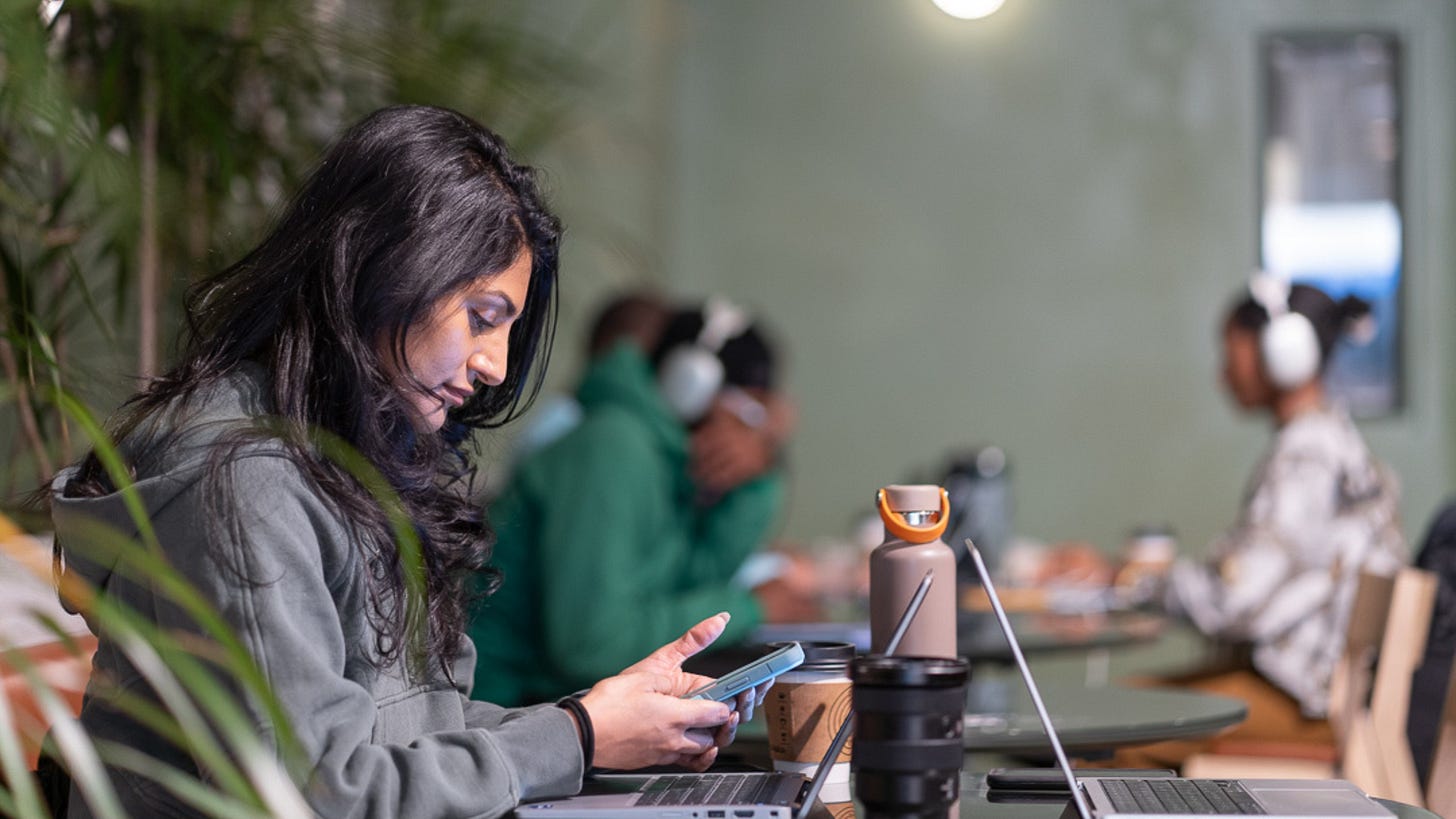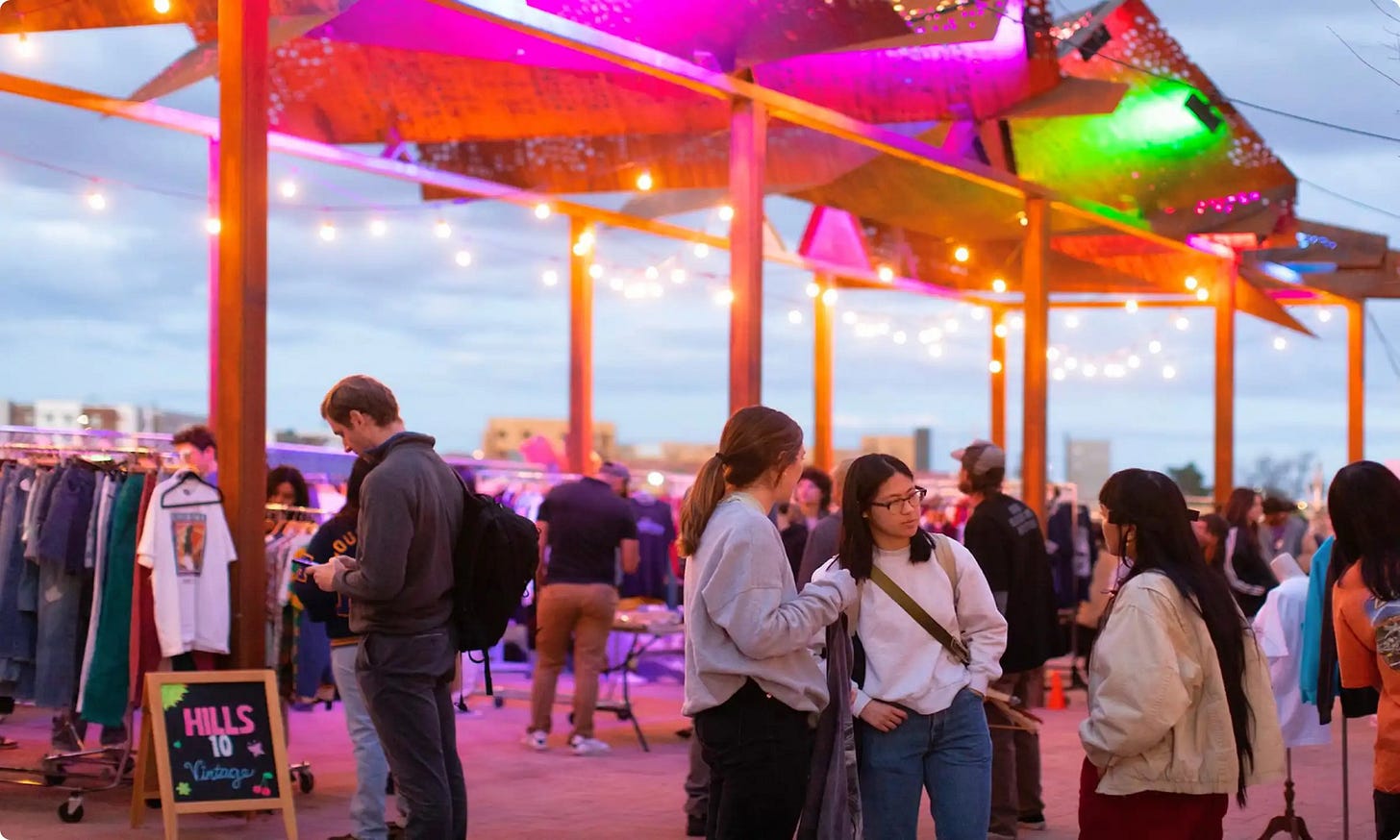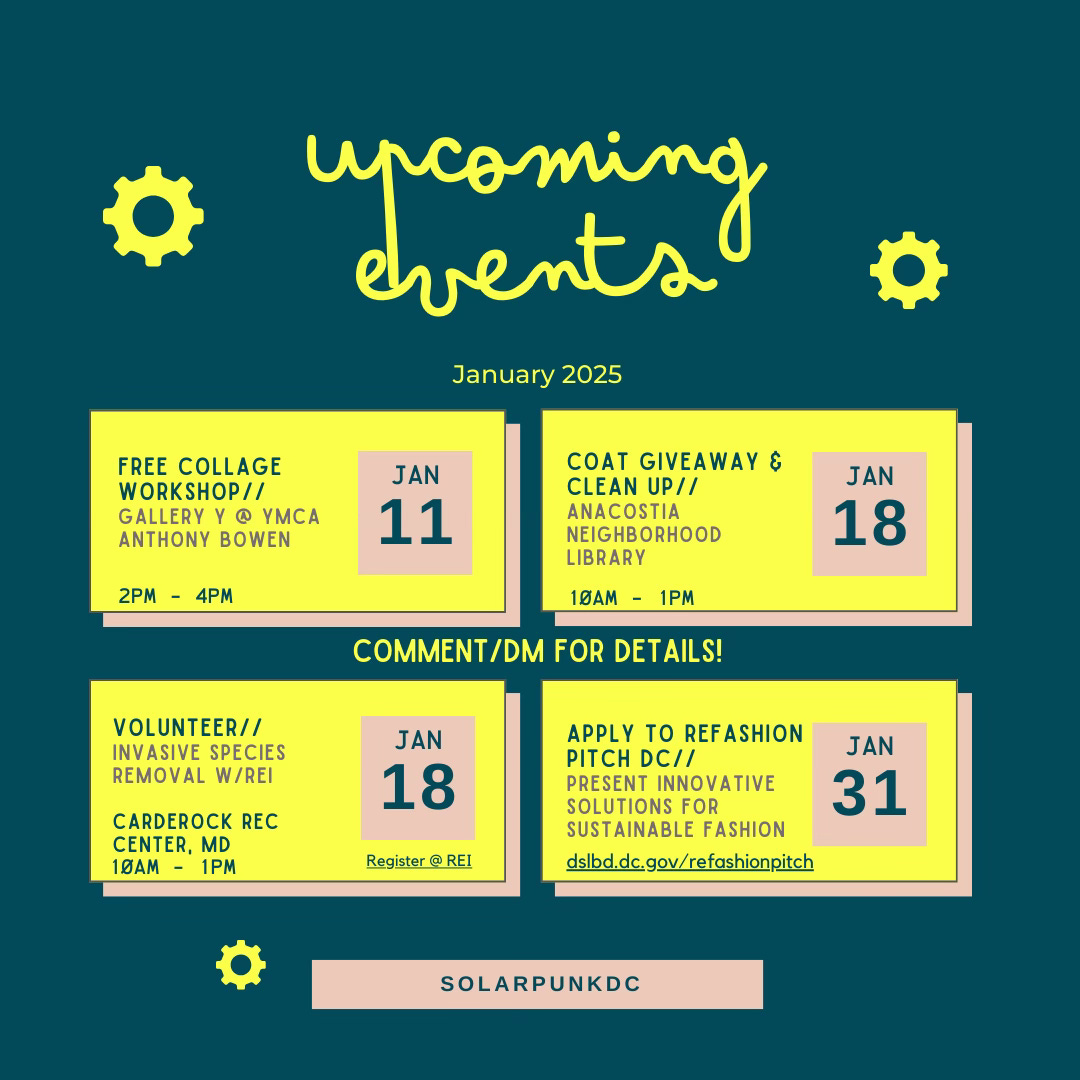New Year, New Generation
From Empowering Teens and Family-Friendly Cities to Vibrant Neighborhoods and Bold Sustainability in the DMV.
Hey, neighbor! Have you noticed how much junk is floating around online these days? It's like the digital version of junk mail. But imagine this: if we could help our teens become misinformation-busting pros, we’d be building a community rooted in truth—a super solarpunk move, right?
Solarpunk isn’t just about clean energy and lush green spaces; it’s about creating communities that thrive on trust and collaboration. Teaching high schoolers to fact-check, recognize bias, and think critically about what they see online is part of that vision. Think of it like planting seeds of truth that grow into a resilient network of informed, connected citizens.
How about making it fun? Picture teens designing creative campaigns to tackle misinformation or working on group projects to analyze the latest viral trend. It’s the kind of skill that spreads, like sharing renewable energy across a grid. With each informed teen, we get closer to a solarpunk future where manipulation fizzles out and facts flourish. What do you say—should we see if the local school wants to add this to their curriculum?
You ever feel like cities just aren’t designed for kids anymore? It’s like they expect families to live in the suburbs while downtown spaces are solely meant for childless adults. But solarpunk is about building inclusive, thriving communities. That includes little humans!
Here’s the thing: your solarpunk DC founders come from non-Western cultures where raising kids was truly a team effort. Neighbors, cousins, teachers, and other members community all pitched in to ensure children were safe, nurtured, and given the tools they needed to grow into strong, kind adults. It wasn’t just about sharing responsibility; it was about weaving children into the fabric of the community so they always had a sense of belonging and care.
That’s exactly the vibe solarpunk cities aim to recapture. Imagine safe, car-free streets where kids can roam freely, playgrounds and green spaces that double as gathering spots for all generations, and vibrant public spaces where everyone—from toddlers to elders—feels connected. It’s about creating environments that foster exploration, learning, and joy for kids while building tight-knit community bonds.
Solarpunk ideals, like community-driven governance, just energy transitions, and sustainable micro-mobility, can lay the foundation for these family-friendly spaces. From shared babysitting co-ops to urban gardens where kids can learn about food and nature, every step brings us closer to a city that truly works for everyone.
Let’s work together to make this vision a reality. Maybe we start with a neighborhood play day, a public meeting about family-friendly infrastructure, or even a simple conversation with other parents about what’s missing. Together, we can create a solarpunk city where raising kids feels like a community-powered act of hope and connection. Let us know what you think about the concept of alloparenting in the comments or chat!
Ever heard of an "18-hour neighborhood"? It's the idea of a community that's active and vibrant from early morning to late evening—bridging the gap between sleepy suburbs and 24/7 urban centers like New York. Greater Greater Washington recently dove into how these neighborhoods are shaping the future of the DC region. It’s a solarpunk dream in the making.
What Makes an 18-Hour Neighborhood?
These neighborhoods have a mix of residential, commercial, and recreational spaces, all within a walkable or bikeable area. Think of spots like Arlington's Ballston or DC's NoMa, where you can grab a coffee, hit the gym, enjoy green spaces, and get your groceries—all without needing a car. The report highlights these areas as ideal for fostering connections, reducing commutes, and promoting sustainable lifestyles.
But here’s the catch: for these neighborhoods to truly thrive, they need thoughtful planning. That means affordable housing, accessible transit, and spaces that encourage community engagement. It’s a perfect alignment with solarpunk principles: creating spaces where people, nature, and technology coexist harmoniously.
As we push for sustainable, people-centered development, 18-hour neighborhoods offer a practical path forward. They support public transit, reduce reliance on cars, and prioritize mixed-use development—all while fostering a sense of community. By turning more neighborhoods into vibrant hubs of activity, we’re building a future that feels connected, equitable, and green.
Want to learn more about how these neighborhoods are transforming our region? Check out the full article on Greater Washington here. Send us a note about what you think we can do to champion these spaces and bring even more solarpunk energy to the DMV!









